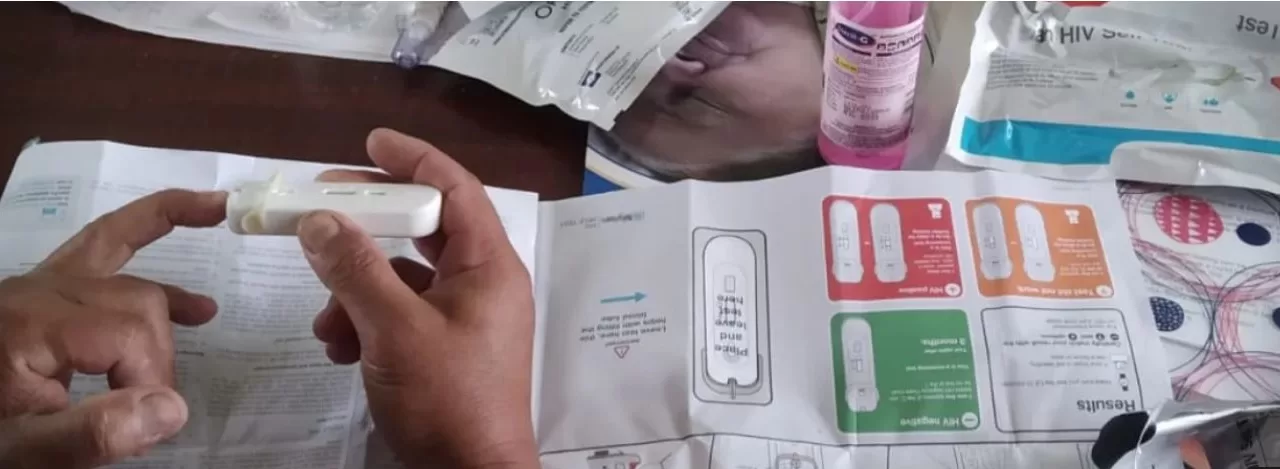
Antiretroviral therapy continues to transform the lives of people living with HIV. People living with HIV who are diagnosed and treated early, and take their medication as prescribed, can expect to have the same health and life expectancy as their HIV-negative counterparts.
“For more than 20 years, countries all over the world have relied on WHO’s evidence-based guidelines to prevent, test for and treat HIV infection,” said Dr Tedros Adhanom Ghebreyesus, WHO Director-General. “The new guidelines we are publishing today will help countries to use powerful tools have the potential to transform the lives of millions of people living with or at risk of HIV.”
At the end of 2022, 29.8 million of the 39 million people living with HIV were taking antiretroviral treatment (which means 76% of all people living with HIV) with almost three-quarters of them (71%) living with suppressed HIV. This means that for those virally suppressed their health is well protected and they are not at risk of transmitting HIV to other people. While this is a very positive progress for adults living with HIV, viral load suppression in children living with HIV is only 46% – a reality that needs urgent attention.
Here is an overview of other key scientific and normative updates being released by WHO at IAS 2023 conference:
HIV and mpox
An analysis of global surveillance data reported to WHO during the multi-country outbreak of mpox, identified that among more than 82 000 mpox cases, around 32 000 cases had information on HIV status. Among those, 52% were living with HIV, most being men who have sex with men (MSM); and more than 80% reported sex as the most probable route of getting infected with mpox.
Among 16 000 people diagnosed with mpox and living with HIV, around one quarter (25%) had advanced HIV disease or immunosuppression – leading to an increased risk of hospitalization and death. People living with HIV who were taking HIV treatment and with good immunity had similar hospitalization and death outcomes as those who were HIV negative.
In the light of these findings, WHO recommends countries integrate mpox detection, prevention, and care with existing and innovative HIV and sexually transmitted infection prevention and control programmes.
To understand how to better prepare for and respond to future increases in mpox transmission, WHO led a rapid electronic survey in May 2023 to assess community experiences of the 2022-2023 mpox outbreak in Europe and the Americas.
More than 24 000 people participated in the survey which focused on men who have sex with men, and trans and gender-diverse people, with 16 875 eligible individuals completing the survey. Almost 51% changed their sexual behaviour (such as reducing the number of sexual partners), and 35% had maintained these changes one year later. Findings from this survey provide valuable insights into the experiences and needs of affected communities and emphasize the importance of increasing access to mpox vaccination and diagnostics globally.
HIV and COVID-19
An updated analysis from WHO global clinical platform for COVID-19 up through May 2023 revealed a persistent high risk of death in people living with HIV hospitalized for COVID-19 across pre-Delta, Delta and Omicron variant waves, with an overall in-hospital mortality rate of 20%-24%. For people without HIV, the risk of death fell during the Omicron variant wave by 53%—55% compared to pre-Delta and Delta variant waves; but for people living with HIV, the percentage decline in mortality during the Omicron wave period compared to the other waves was modest (16%-19%). This difference resulted in a 142 times increased risk of death among people living with HIV when compared with people without HIV during the Omicron wave period.
Risk factors for in-hospital death that were common across all variant waves of the pandemic were low CD4 count (less than 200 cells per m3), and severe or critical COVID-19 illness at hospital admission.
“Uncontrolled HIV remains a risk factor for poor outcomes and death in the mpox outbreak and COVID-19 pandemic”, said Dr Meg Doherty, Director of WHO’s Global HIV, Hepatitis and Sexually Transmitted Infections Programmes. “We must ensure the integration of HIV considerations in pandemic preparedness and response. Protecting people living with HIV from future pandemics is vital and reinforces the need to ensure access to HIV testing and treatment and preventive vaccines for mpox and COVID-19 to save lives; community-led responses that work for HIV will also be beneficial for addressing future pandemics.”
Optimizing HIV testing services through expanded testing options and simplified service delivery
With new recommendations on HIV testing, WHO is calling on countries to expand use of HIV self-testing and promote testing through sexual and social networks to increase testing coverage and strengthen uptake of HIV prevention and treatment services in high-burden settings and in regions with the greatest gaps in testing coverage.
The recommendation comes at a pivotal time, where self-care and self-testing are increasingly being recognized as ways to increase access, efficiency, effectiveness and acceptability of health care across many different disease areas, including HIV.
Primary health care and HIV
A new policy framework on primary health care (PHC) and HIV will help decision-makers optimize work and collaboration underway to advance primary health care and disease-specific responses, including HIV. In the second year of implementation, the Global Health Sector Strategies on HIV, viral hepatitis and sexually transmitted infections for 2022-2030 actively advocate for synergies within the framework of universal health coverage and primary health care.
“Ending AIDS is impossible without optimizing opportunities across and within health systems, including with communities and in the context of primary health care”, said Dr Jérôme Salomon, WHO Assistant Director-General, Universal Health Coverage, Communicable and Noncommunicable Diseases.
This latest research and guidance are being presented at a time when progress towards ending the global AIDS epidemic has lagged, after the COVID-19 pandemic; but the response is rapidly catching up, with some countries now charting a path to end AIDS, including Australia, Botswana, Eswatini, Rwanda, United Republic of Tanzania, and Zimbabwe and 16 other countries that are close to reaching the 95-95-95 global targets, which aim for 95% of people living with HIV knowing their status, 95% of those diagnosed receiving ART and 95% of those on treatment having suppressed viral loads.












